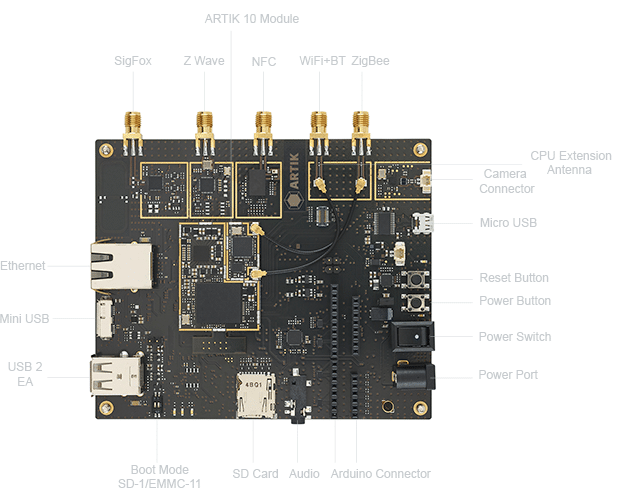
In-brief: Samsung introduced its ARTIK development boards, which offer advanced security features and integration with Arduino as a way to lure IoT developers to the platform.
Samsung used the IOT World conference in San Francisco to make a major play for the burgeoning IoT “maker” community this week: announcing its ARTIK platform for everything from tiny sensors to larger, embedded systems. And the company is promising robust, end to end security as one of the platform’s main selling points.
The company unveiled ARTIK on Tuesday, saying the new ARTIKTM platform will enable “faster, simpler development of new enterprise, industrial and consumer applications for the Internet of Things (IoT).” It claims that ARTIK will raise the bar on IoT security and privacy, with hardware-based encryption via an embedded secure element and integrated anomaly detection features that can spot attempts to hack ARTIK devices.
[Read more Security Ledger coverage of Samsung here.]
“We are providing the industry’s most advanced, open and secure platform for developing IoT products”, said Young Sohn, president and chief strategy officer, Samsung Electronics in a statement.
Samsung is starting with development boards in three configurations. The ARTIK 1 is a tiny, 12mm-by-12mm “Skittle“-sized board that combines Bluetooth and Bluetooth Low Energy connectivity and a nine-axis sensor for low-power, small form- factor IoT applications. The ARTIK 5 a 29mm board targeted at “home hubs, drones and high-end wearables” with a 1GHz dual-core processor and on-board DRAM and flash memory. Finally, the ARTIK 10 is a 39mm device with an eight-core processor, full 1080p video decoding/encoding, 5.1 audio and 2GB DRAM along with 16GB flash memory along with on-board wireless connectivity (Wi-Fi, Bluetooth/BLE and ZigBee). It is intended for use with home servers, media applications, and in industrial settings, Samsung said.
Samsung is hoping to jump-start use of ARTIK by making it compatible with the Arduino ecosystem. That means that ARTIK can be programmed using the Arduino Software Development Environment (IDE). Samsung is also supporting Temboo, a robust IoT software stack a that will allow developers to jump directly into application development for ARTIK, rather than needing to develop low-level libraries and other supporting pieces from scratch.
Security has been an area of intense interest for Samsung, which is looking to establish itself as the platform vendor of choice for Internet of Things. In January, for example, Samsung announced plans to collaborate with IBM on IBM’s ADEPT platform, which is based on the “blockchain” technology pioneered by BitCoin. The two companies say ADEPT will help billions of connected devices interact securely.
